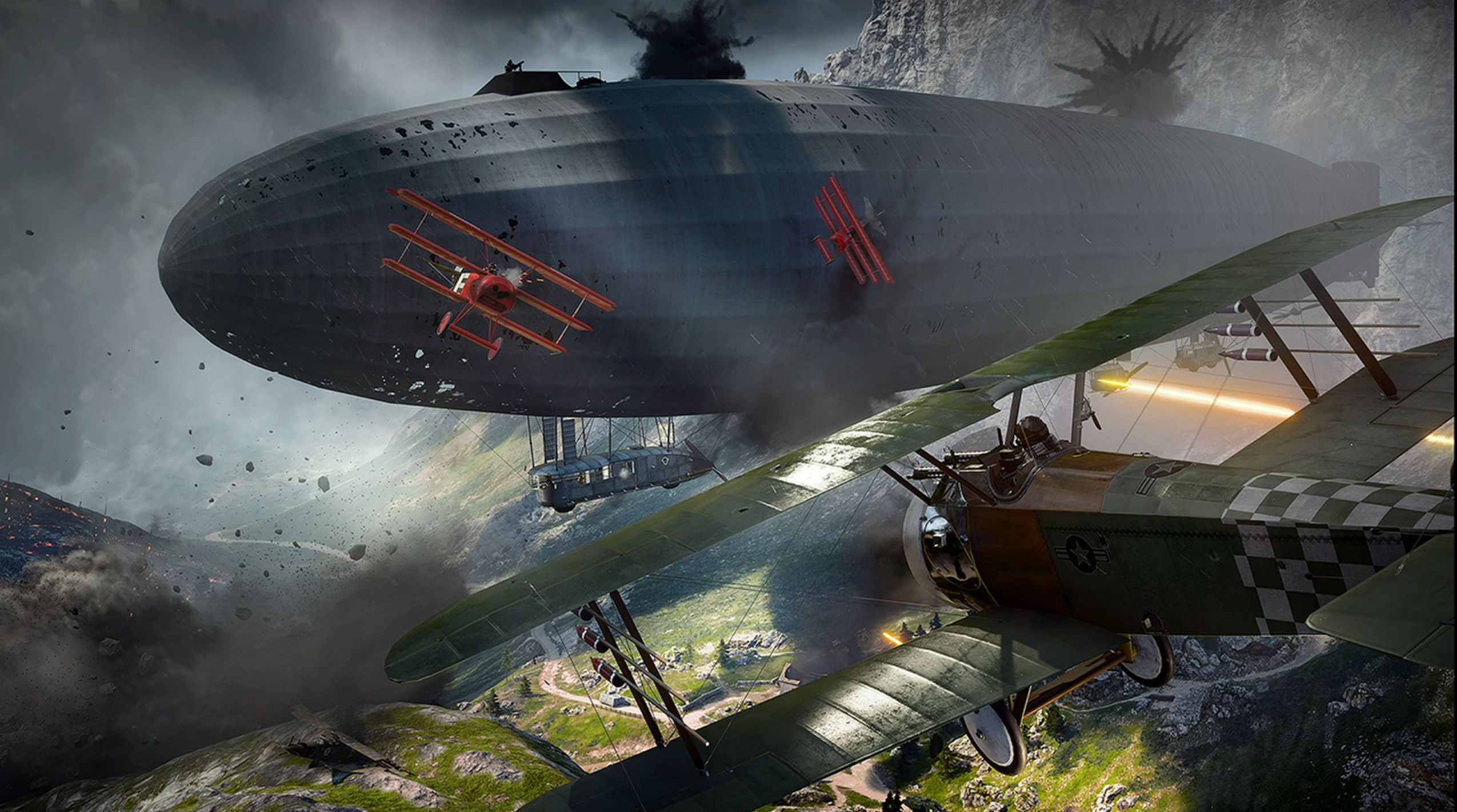Battlefield 1 has quickly become my current multiplayer game
of choice. Set in approximately the 1917 time frame after America entered the
war, it showcases the clash of old and new technologies that defined the Great
War. Horse-mounted cavalry charge alongside the first tanks. Infantry combat
mixes machine-guns with spiked trench maces. Overhead, wood and canvas biplanes
and triplanes duel to the death.
 |
| Official game art from EA. Fokker DR. 1 triplanes, a rocket armed SPAD XIII, and a Zeppelin! |
Aviation is my specific fascination; as regular readers will
already know. Military aircraft evolved during World War 1 at a prodigious
pace, moving from slow, unarmed reconnaissance aircraft whose pilots waved to
their foes; to relatively fast powerful fighters armed with two or three machine-guns battling the first aerial bombers.
Battlefield 1 divides its aircraft into three types:
Fighters, Attack, and Bombers. If you’re looking for accurate, simulator
quality flight models, this is not the game for you. The aircraft look
fantastic, however, while the game trades flight model fidelity for simplified
fun that fits well with the rest of Battlefield’s vehicles.
For the next few weeks I’ll be doing a deep dive into some
of the history and stories behind these aircraft.
First, the fighters. Battlefield characterizes fighters as
anti-air focused, single-seat aircraft, with limited ground attack capability.
The designers choose four of the most iconic aircraft of WW1 for this role: The
SPAD XIII (France), Sopwith Camel (England), Albatros D. III (Germany), and
Fokker DR. I (Germany). All great choices, particularly the iconic DR. I
triplane, although I would have loved to see a Nieuport 11 and Fokker Eindecker
from earlier in the war represented as well.
 |
| Nieuport 11 (replica) |
Attack aircraft, which Battlefield defines as two-seat
multirole aircraft with both air- and ground-attack abilities, draw from both
fighter and reconnaissance aircraft used during the war. German gets the
Rumpler C.I and Halberstadt CL. II, while the Allies get the Salmson 2 and
Bristol F2B Fighter. The “Brisfit” is a particularly inspired choice, as its
reputation was built on its success at fighting like a smaller, nimbler single
seater.
-

Bristol F2B Fighter configured with bomb racks. Photo from the Imperial War Museum
Finally, for bombers, Germany gets the Gotha IV, while the
Allies get the Caproni CA.5. Why an Italian bomber rather than a French or
English design, I don’t know, but it does mean that all the major powers to
field indigenous designs are represented.
World War 1 is an era that is seriously underrepresented in
gaming. Here’s hoping that Battlefield and a couple of other games will turn
developers’ eyes back to this tumultuous setting.

No comments:
Post a Comment